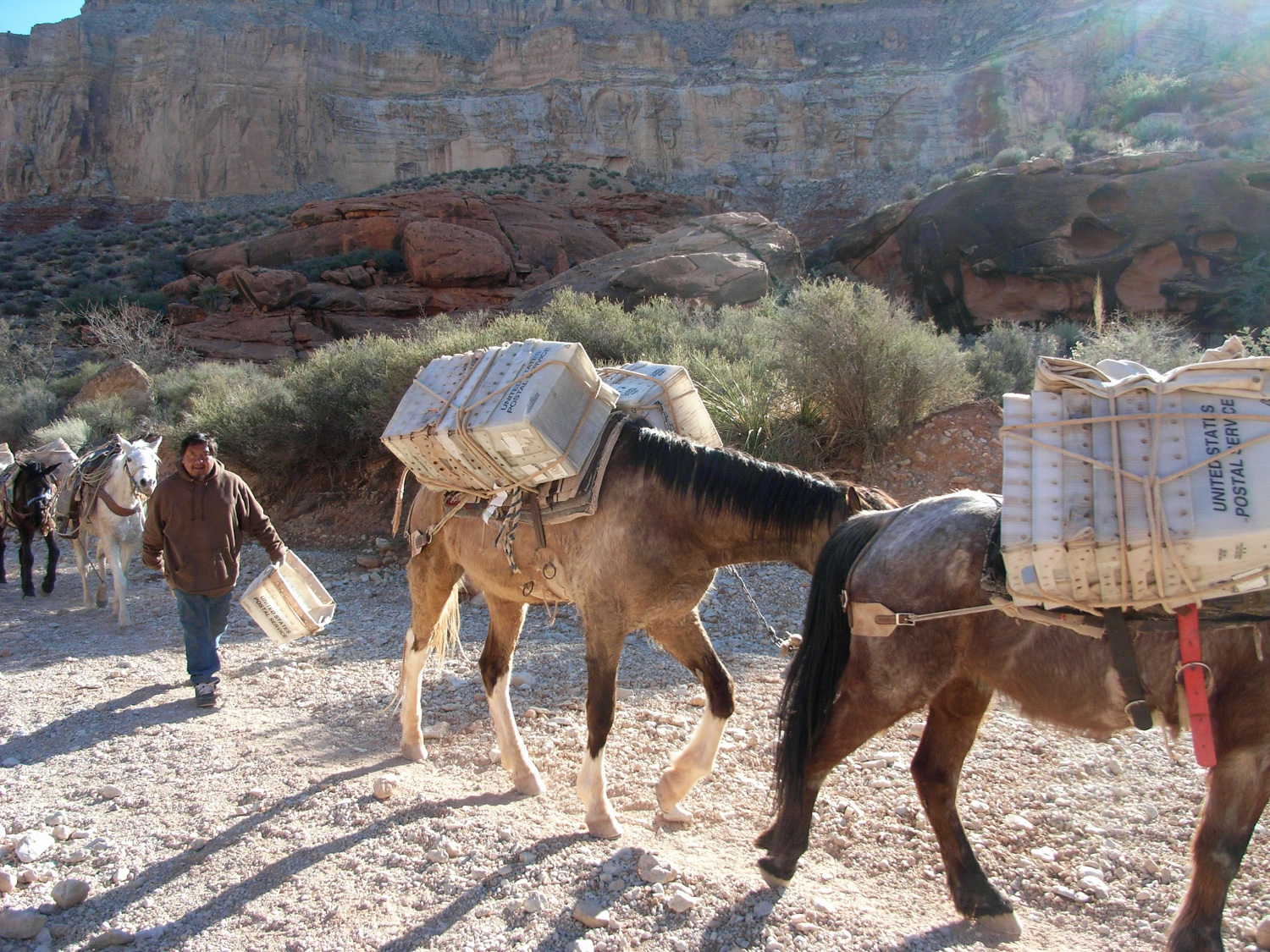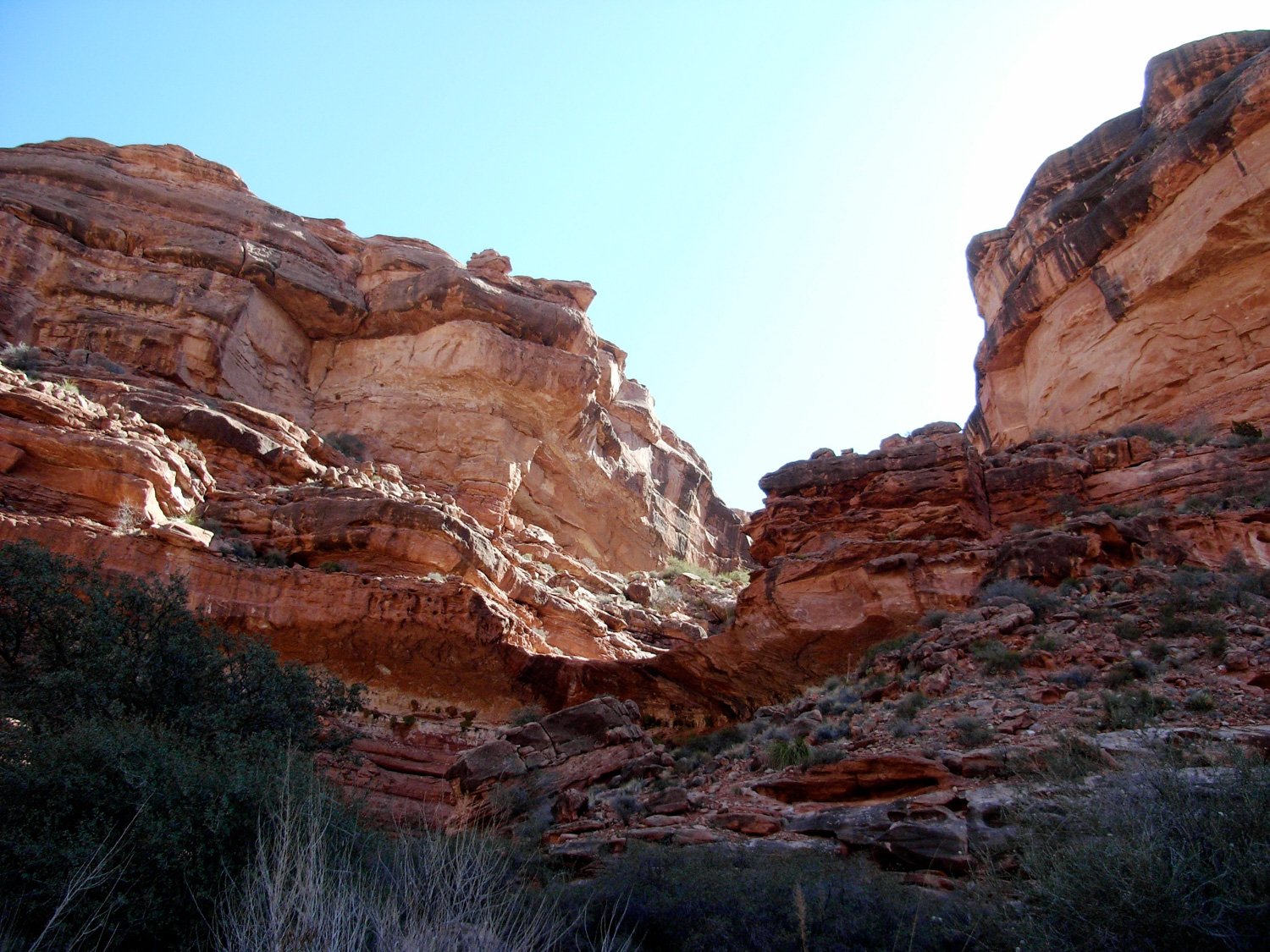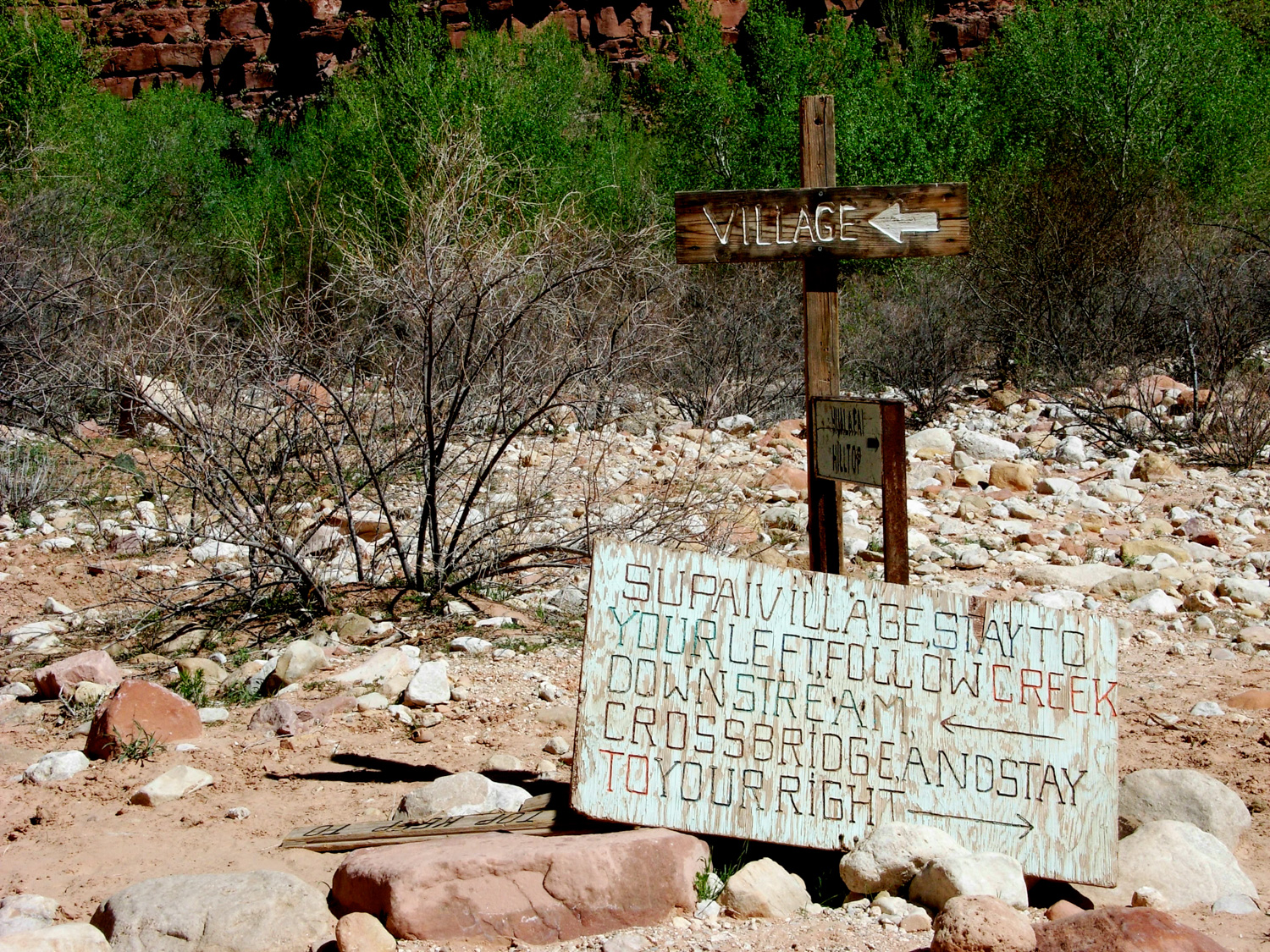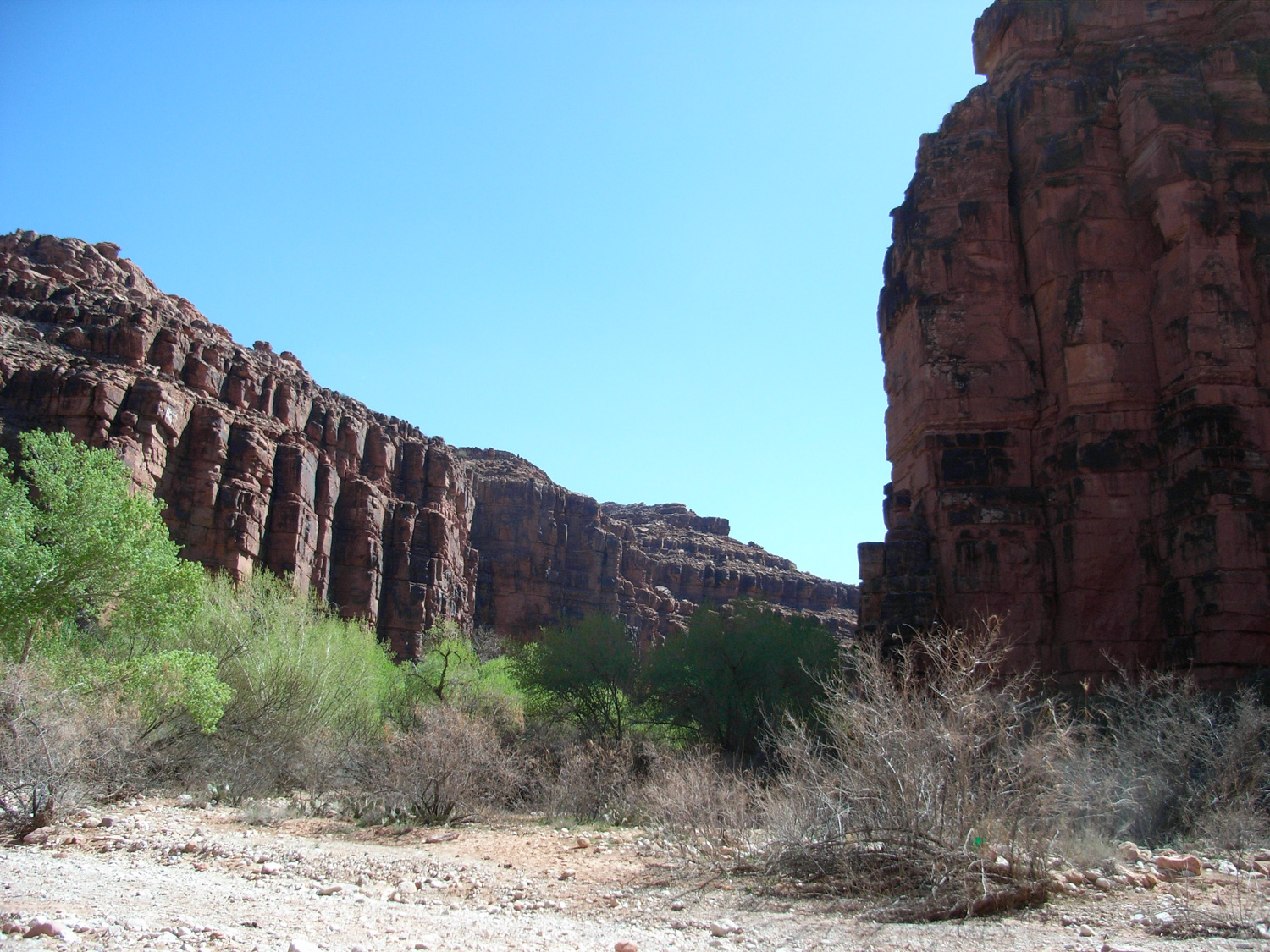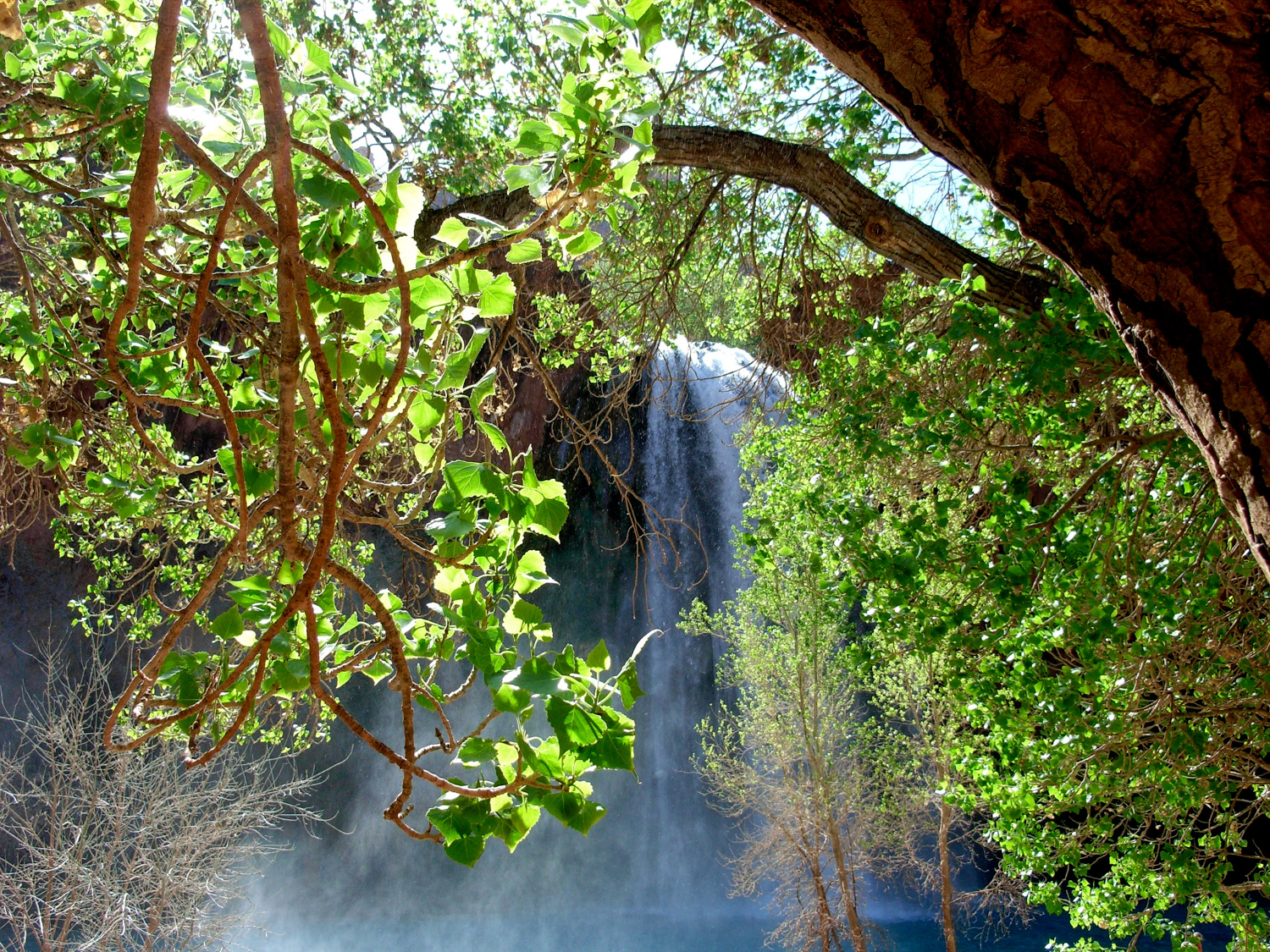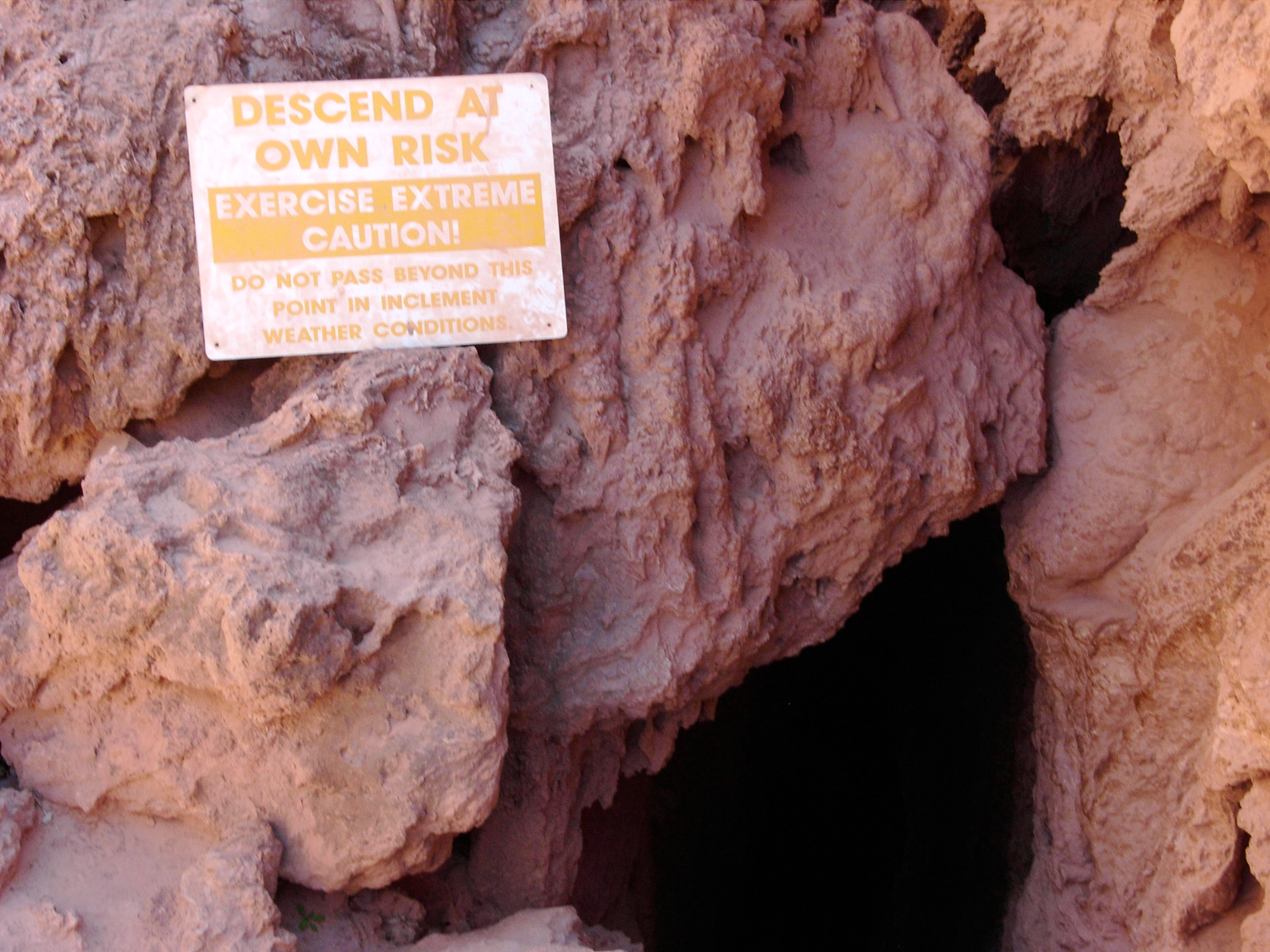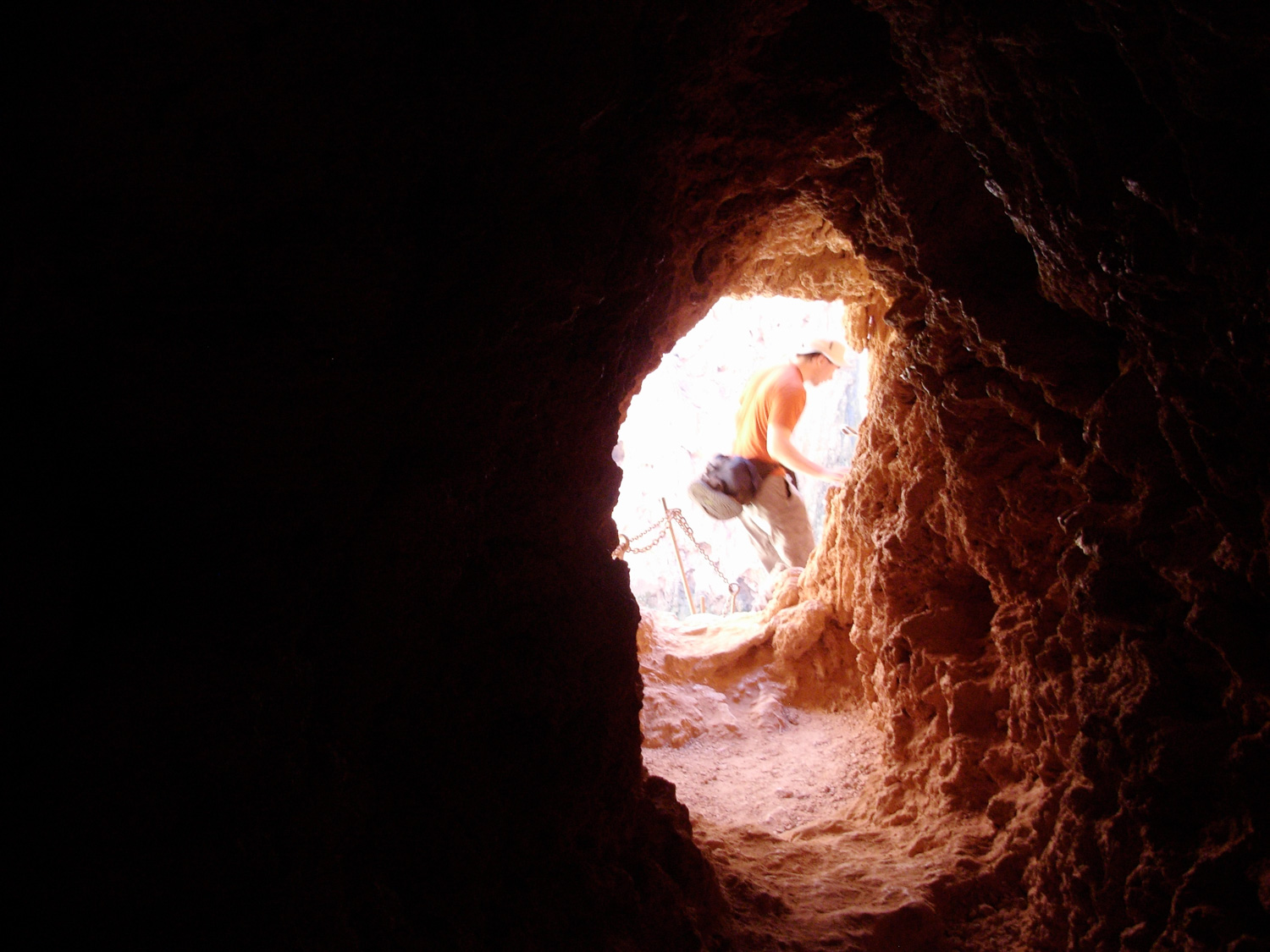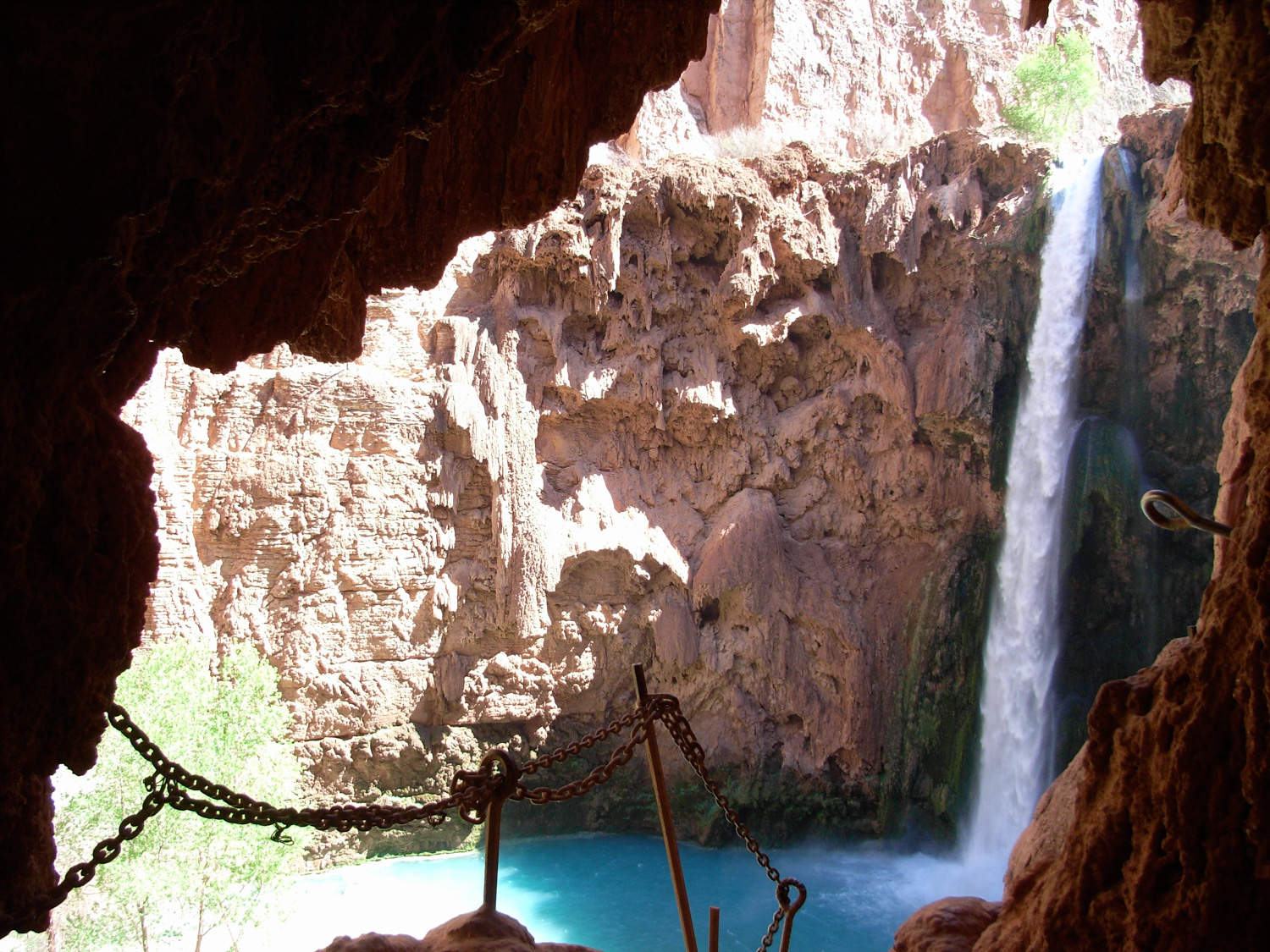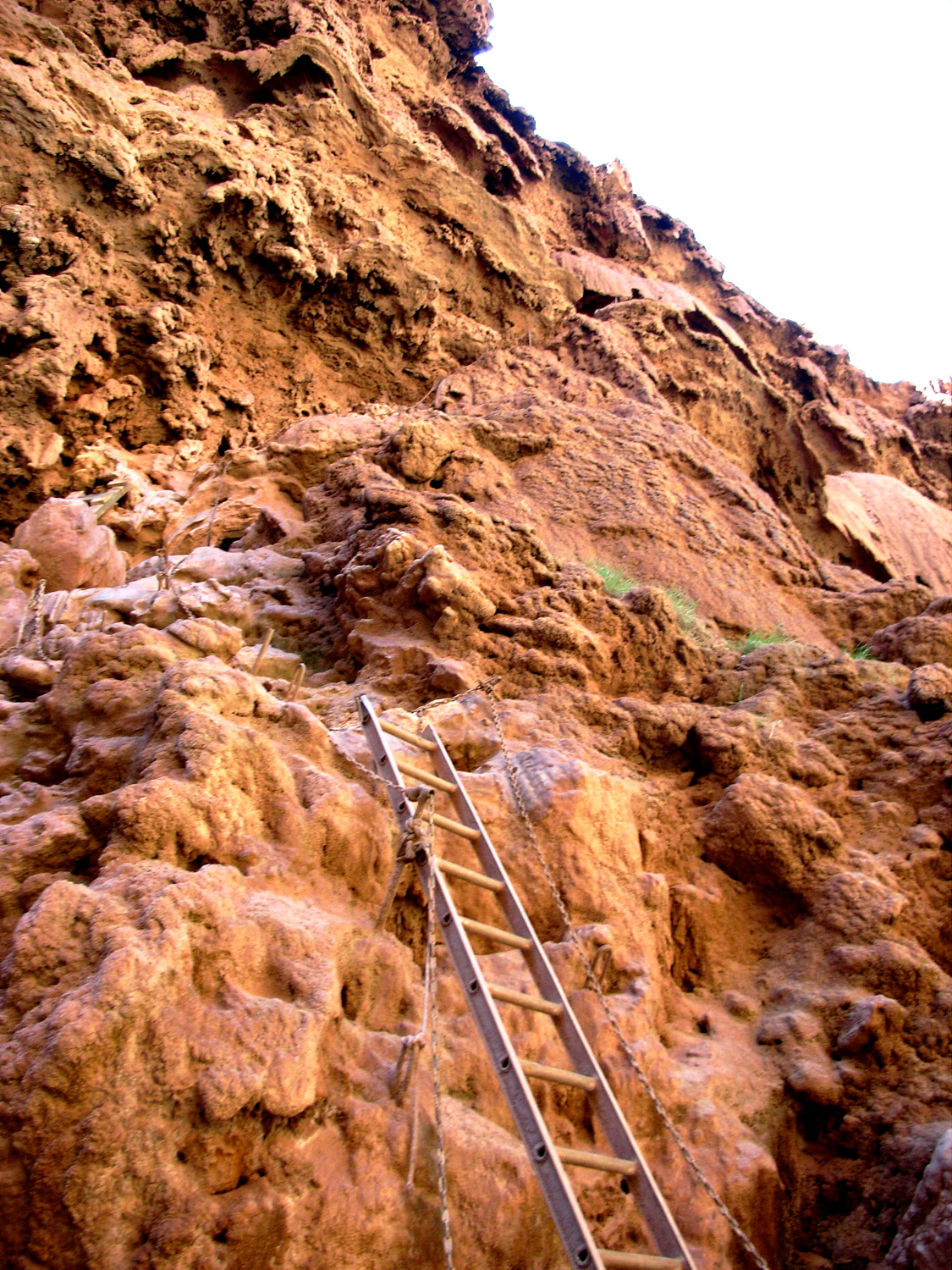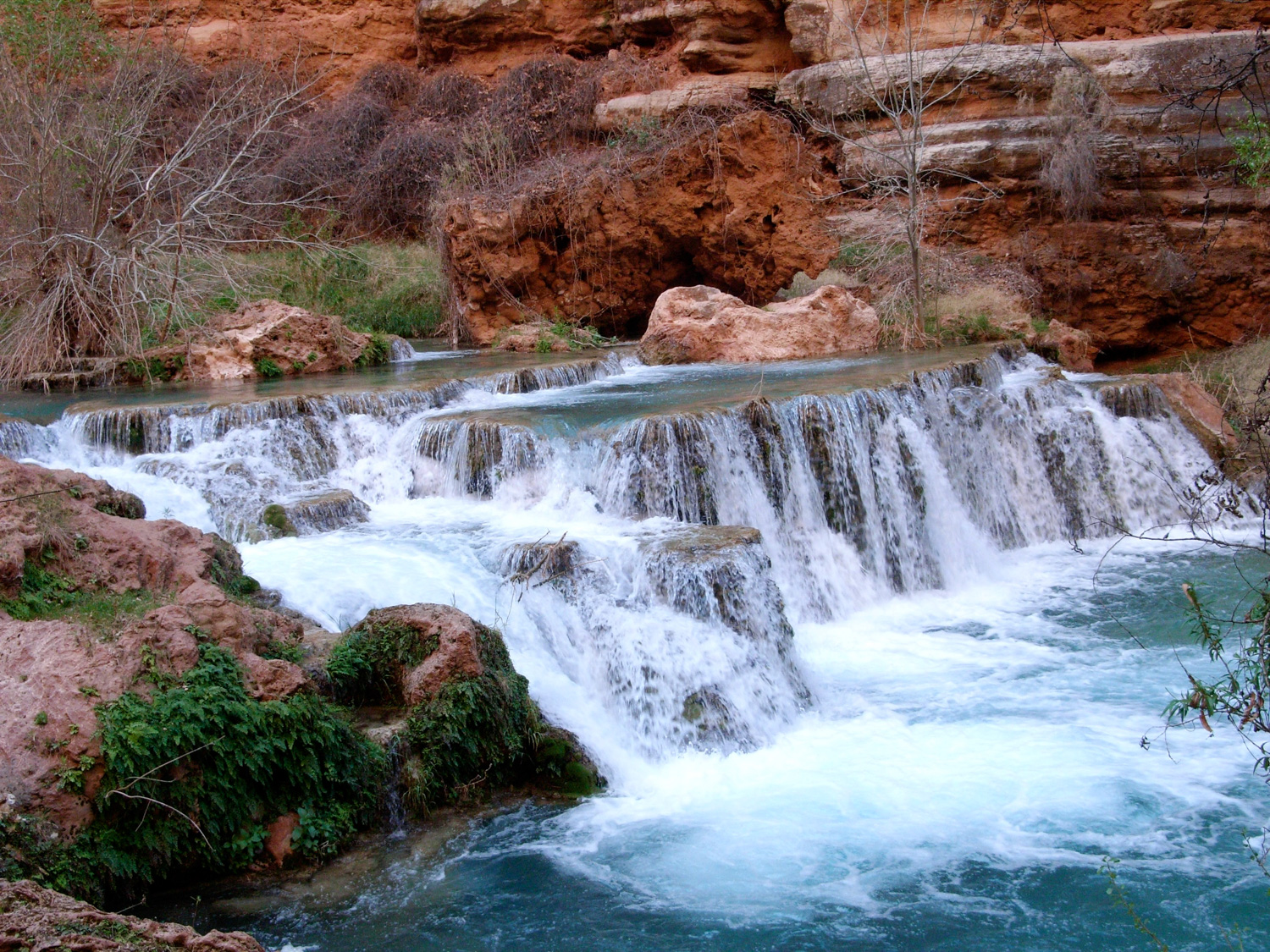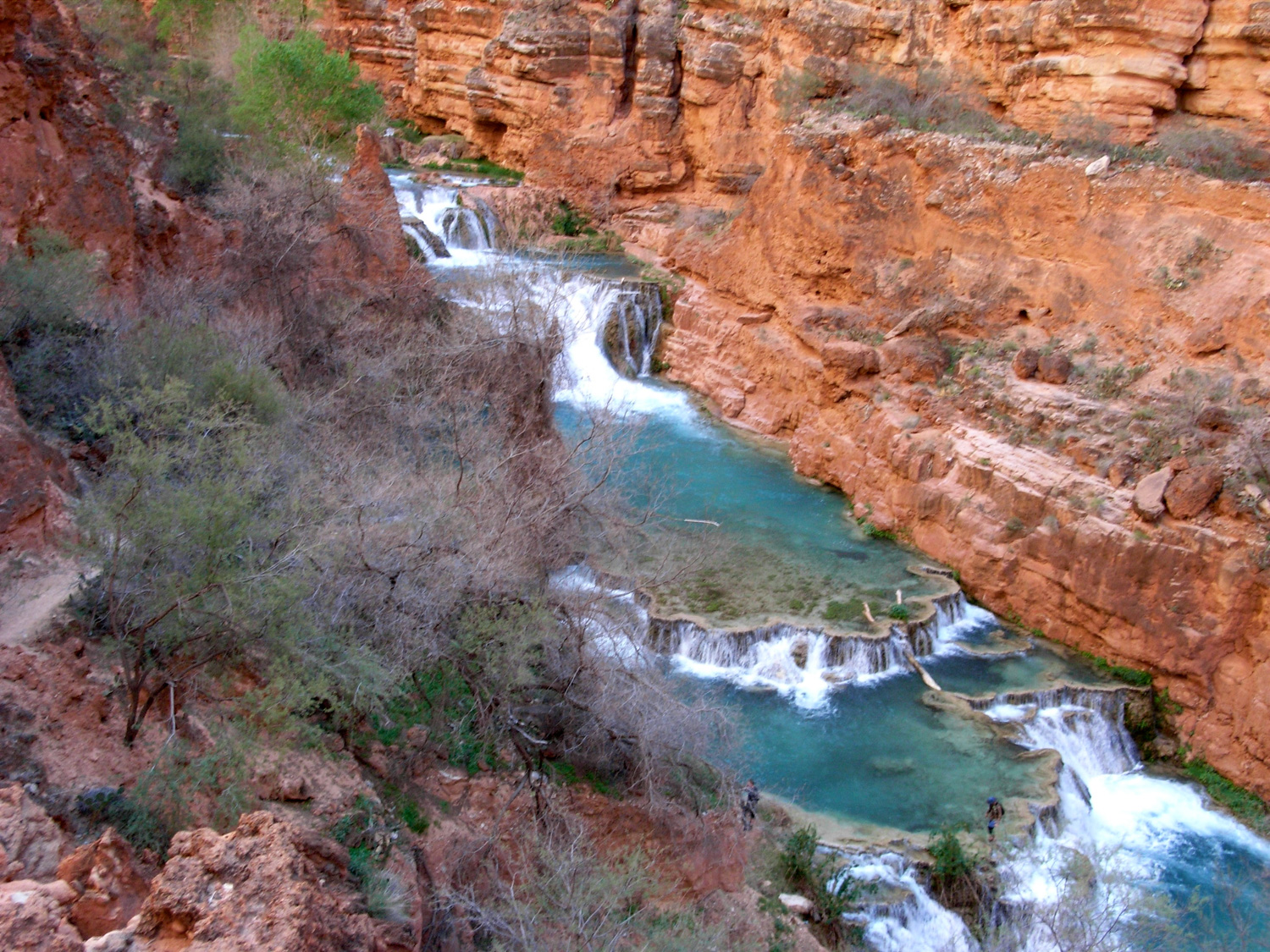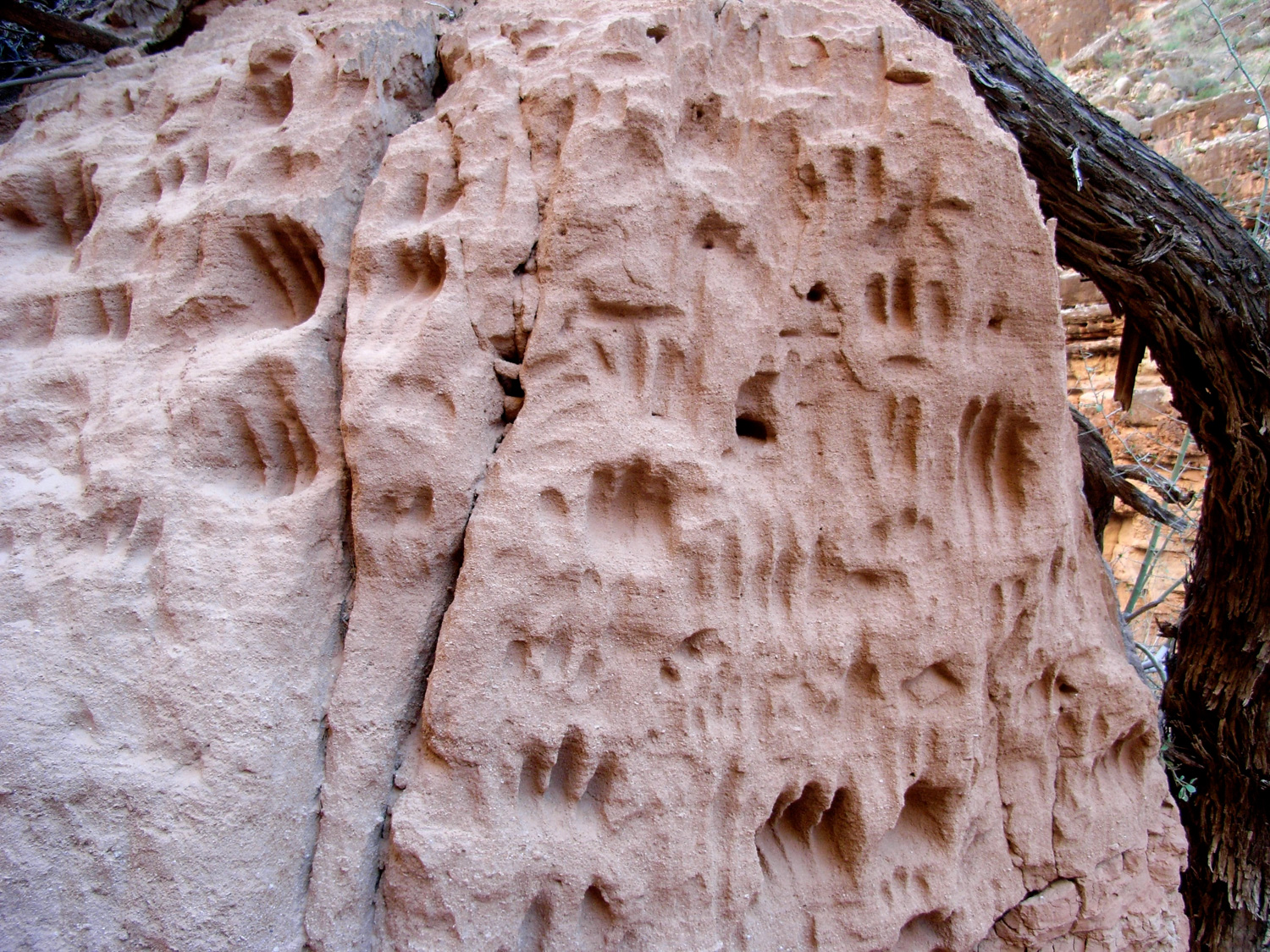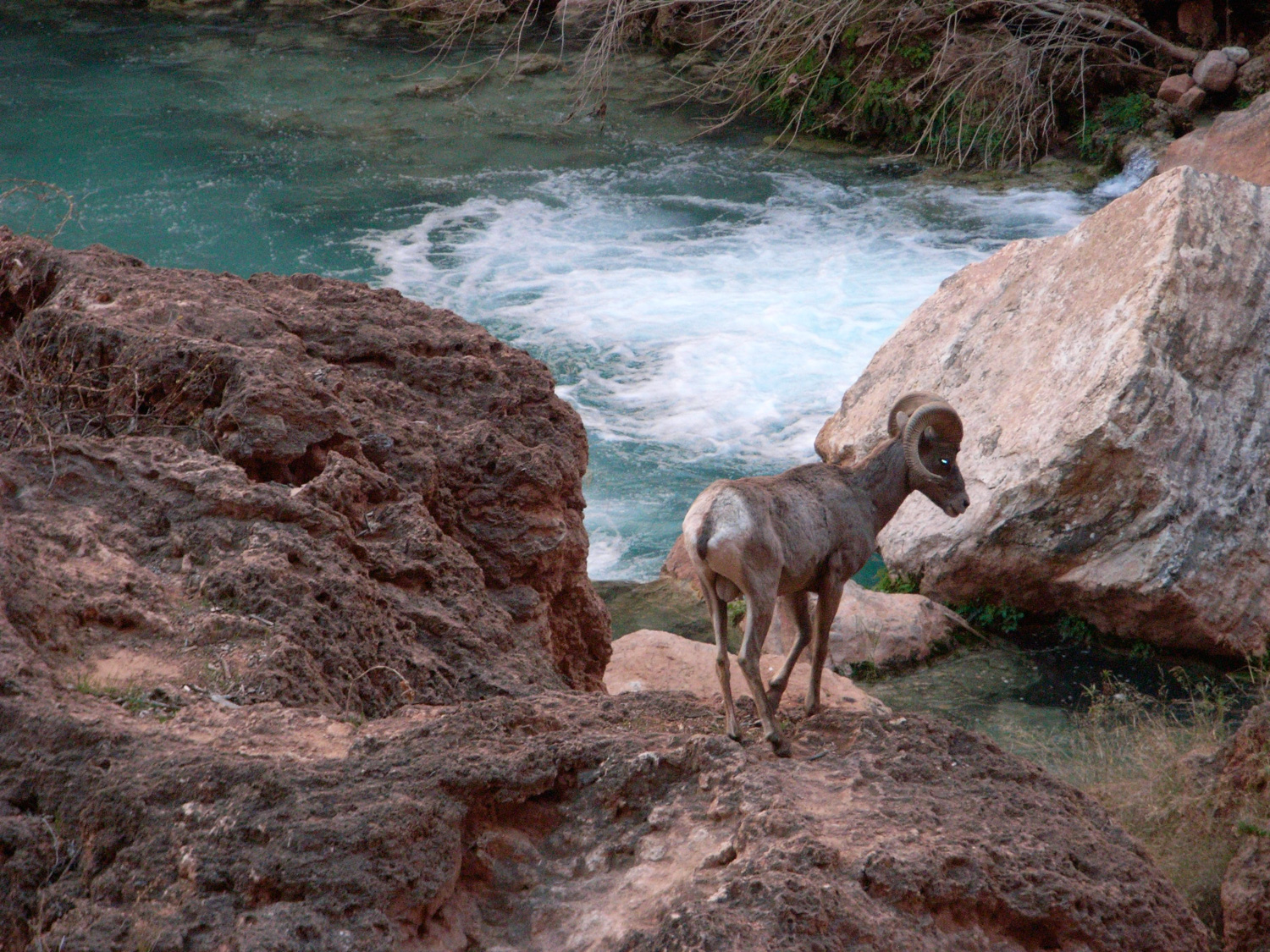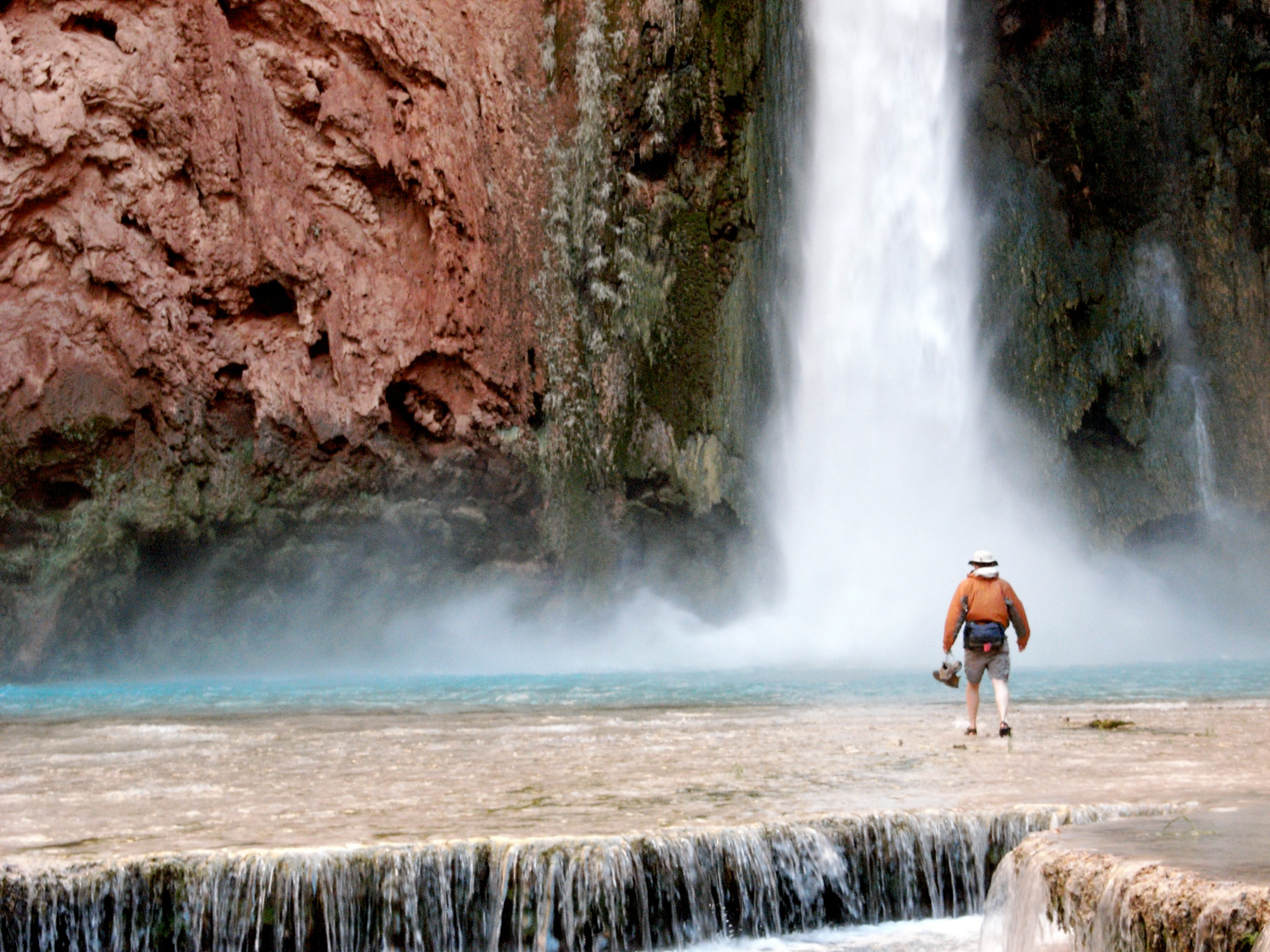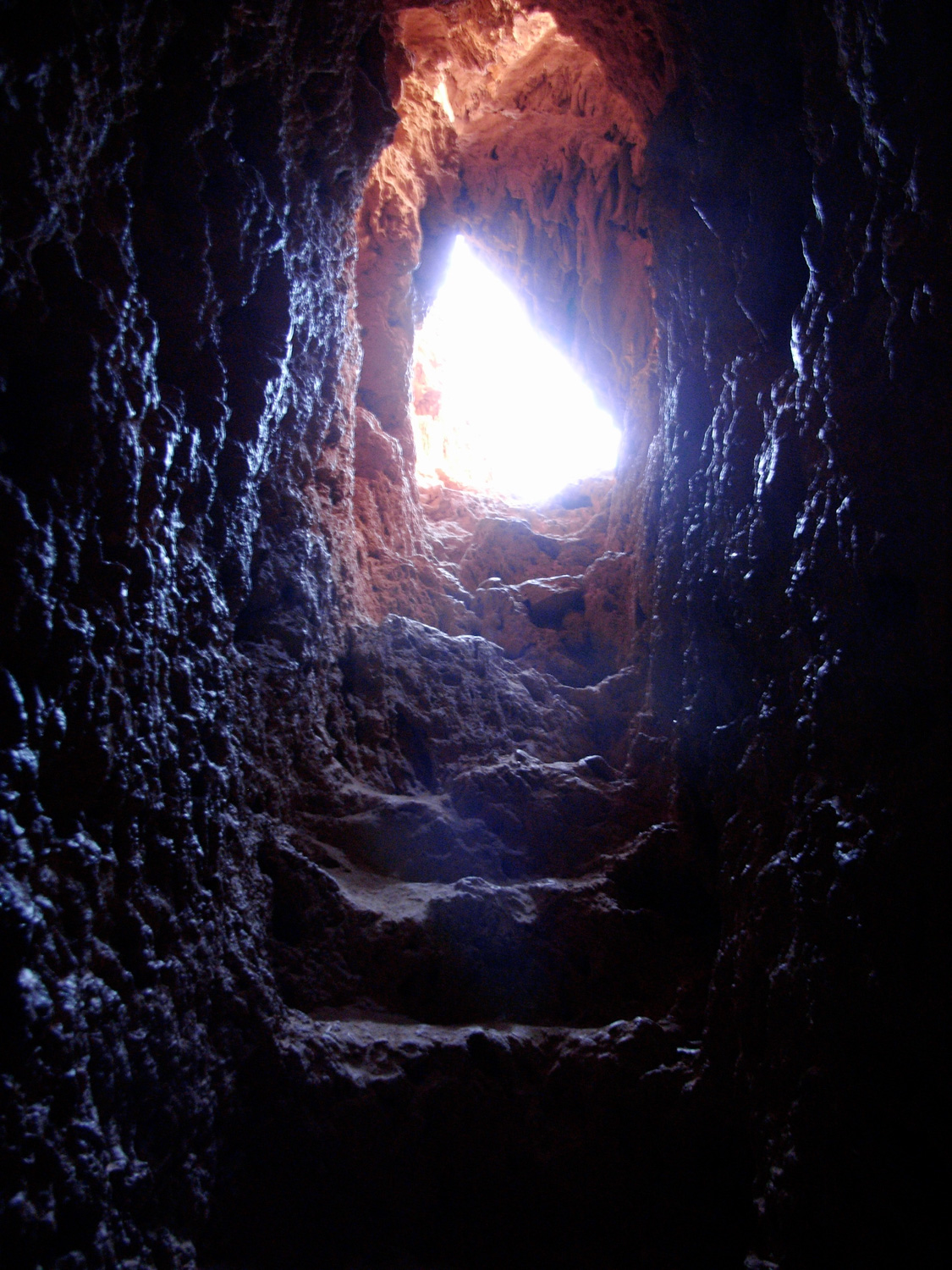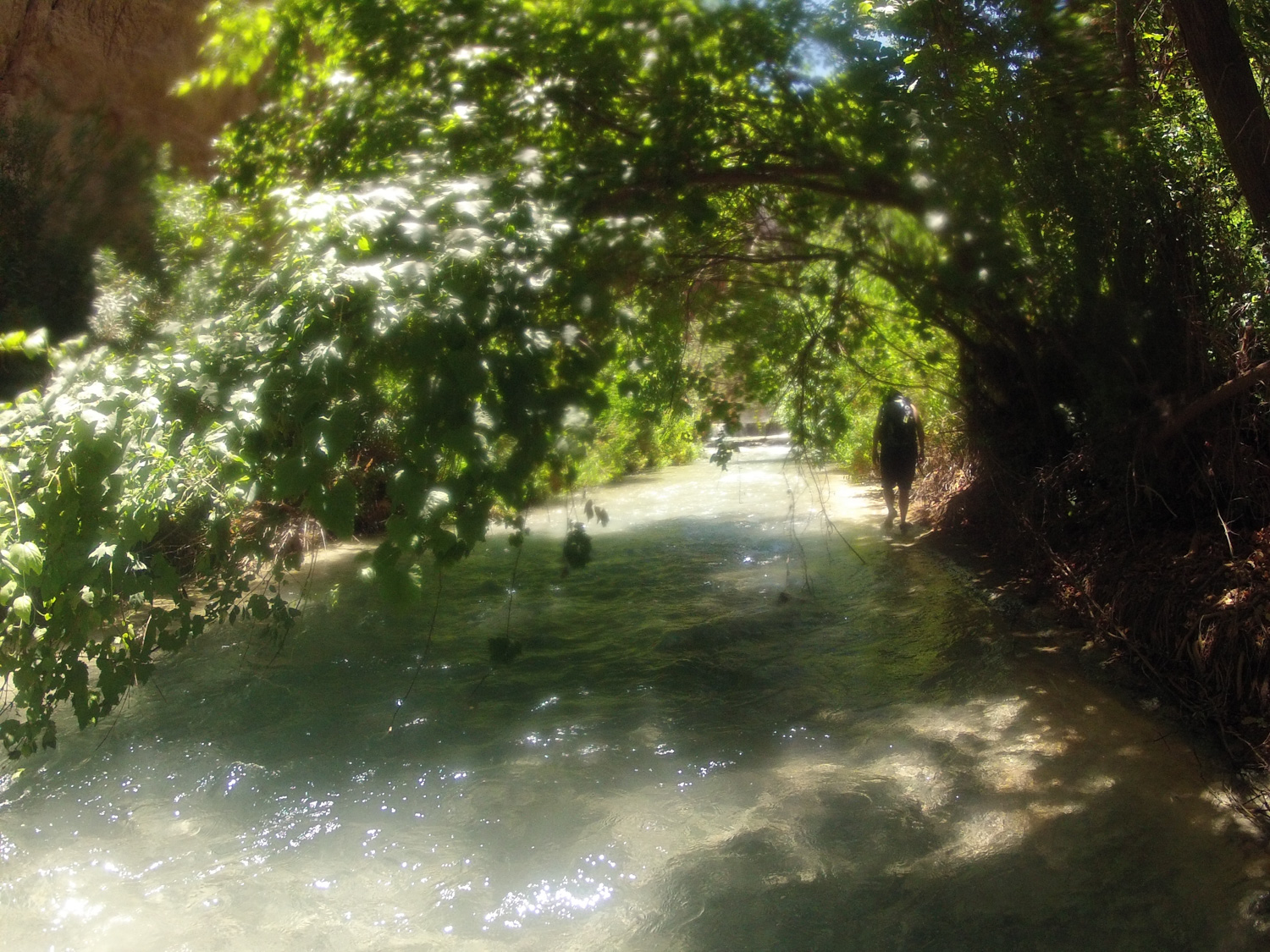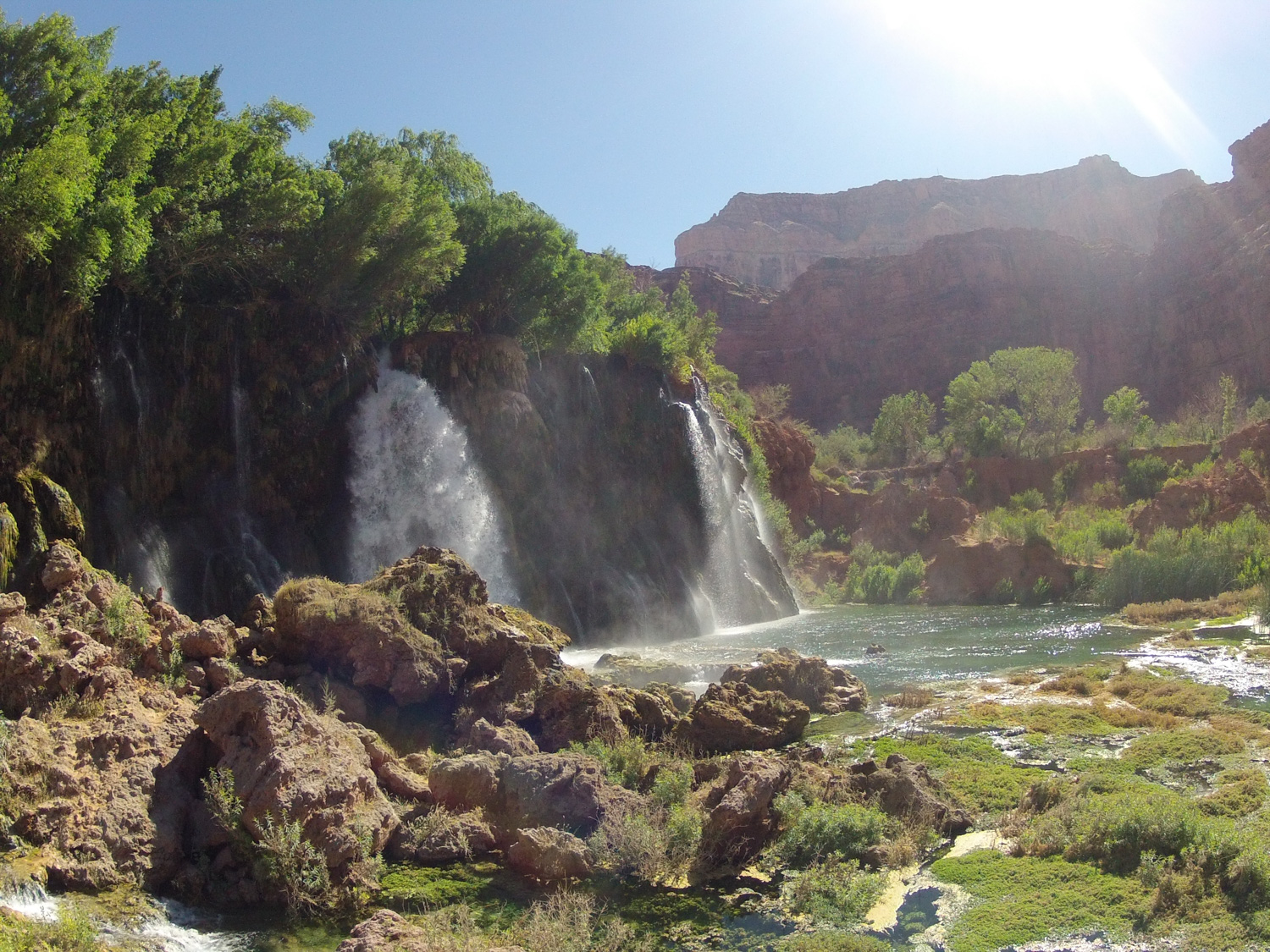The iconic trek to Havasu Falls is a 20-mile backpack in the Havasupai Reservation. This breathtaking journey takes you from the rim of one of the offshoots of the Grand Canyon down to the village of its only permanent inhabitants, alongside a tropical-turquoise river and two stunning waterfalls — Navajo and Havasu Falls. Havasu Falls has the distinction of being one of the most-photographed waterfalls in the world. A further day-hike from the campsite deeper into Havasu Canyon gets you to two more postcard-perfect cascades — the 210 foot tall Mooney Falls and the staggered staircase of Beaver Falls. A truly memorable backpacking and hiking experience.
RED TAPE:
You must reserve a spot at the campground or lodge via telephone before you hike. There are also a list of fees you may or may not have to pay, depending on where you’re staying and whether or not you agree to pack out your own trash. The amounts of these fees can change without notice, so please check the tribe’s site in advance.
For information on permits and other questions, contact the Havasupai Tourist Office at 928-448 2121/2141/2180 or email httourism0@havasupai-nsn.gov. For a reservation at the Havasupai Lodge, call 928-448 2111/2101 or email htlodge0@havasupai-nsn.gov. The Havasupai Tourist Office and the Havasupai Lodge can also make arrangement for pack mule service if you’d like.
Online reservations can be made on the tribe’s new website as well (login and account required).
In 2023, the Tribe also launched the first and only OFFICIAL tourism page for this region, which you can access via Facebook.
There are port-o-potties at the campsite, and a free-flowing spring. The tribe recommends you treat the water before drinking it.
A little while back, I joined the Sierra Club’s L.A. Backpacking chapter on a group trip to Havasu Canyon for four days in northwestern Arizona. I’d seen some pictures of Havasu Falls and was immediately enchanted, and even though the 20 miles was far greater than any backpack I’d done before, I figured I’d spent the past few months essentially training for such a trip. So I squeezed all my gear into my pack, and joined the Club on an overnight bus ride from West Covina to Hualapai Hill — there, just as dawn was breaking, we filed out of the bus, stretched out, laced up, and saddled up our packs.
At the top of the hill, the temperatures were cold enough to warrant fleeces and winter hats, and while we waited for the group to assemble and begin descending, we amused ourselves watching the free-roaming mules and horses wander around the packed parking lot.
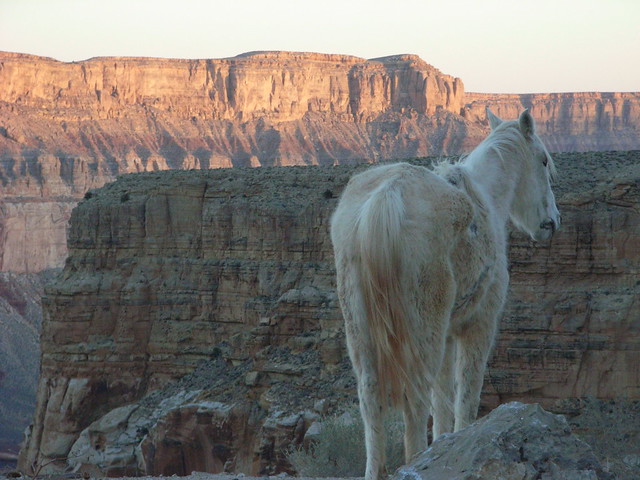
The first mile and a half down are by far the most strenuous, as the trail drops just under 1100 feet on a series of switchbacks.
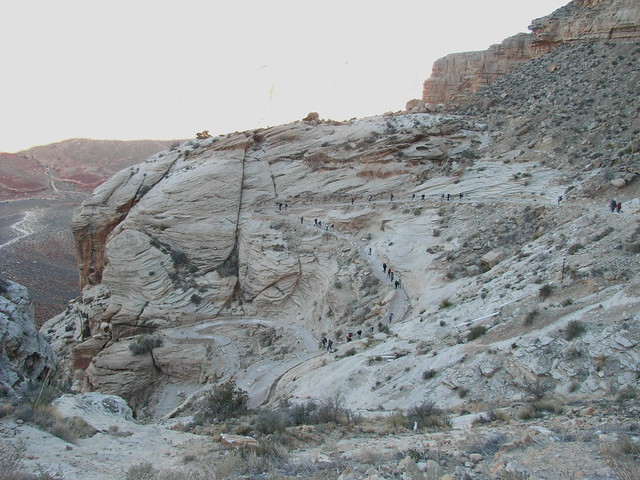
After the switchbacks, the trail drops along an easier incline to a dry wash at the bottom of Hualapai Canyon. From here, you’ll be travelling north about 6 and a half miles to the village, on a barely-noticeable slight decline (from 5200 feet at the hilltop to just over 3200 feet at the village). Enjoy the wide, open-air views of the surrounding canyons while you can, because pretty soon, you’ll be closed in by steep rock walls.
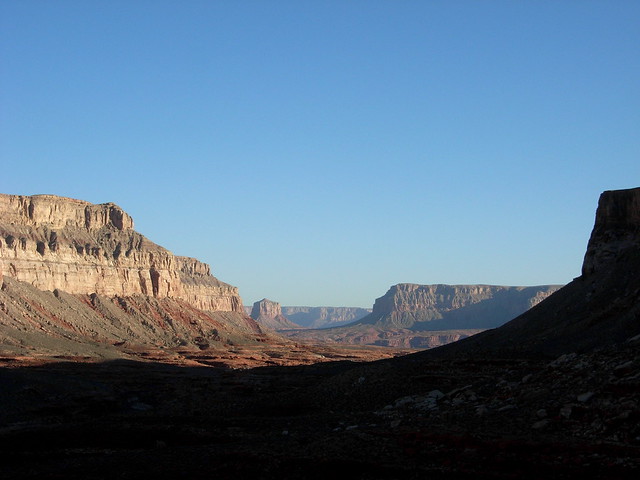
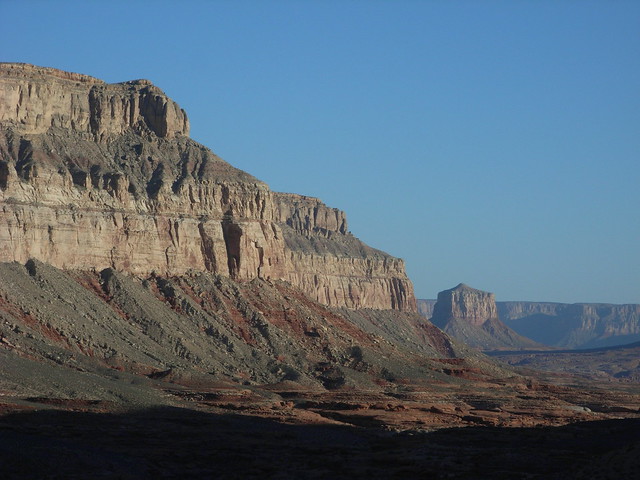
While this is the desert and daytime temperatures can reach over 100 degrees in the summer, we were hiking in mid-March, and had started in the morning … so even in the sections of more open canyons, we still had plenty of shade. I kept my fleece on for almost the entire hike in, although I did take off my winter hat once we got moving on the canyon floor.
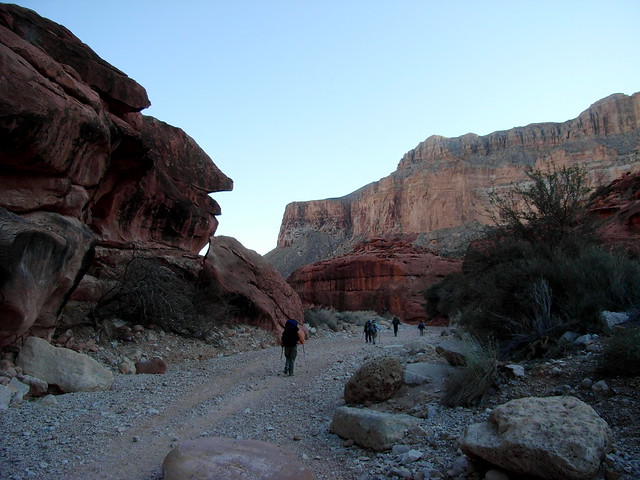
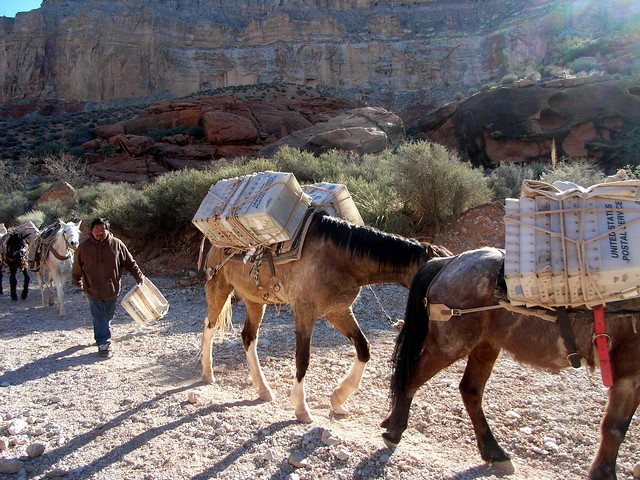
The scenery on the descent is striking, and on a good day you’ll be blessed with the bright blue desert sky and enough light to bring out the reds and browns of the canyons surrounding you. On the way down, take time to consider all of the wind and water it took to hollow out this immense system of canyons, and take note of all the nooks and crannies life has worked its way into. It’ll give you a nice perspective on things.

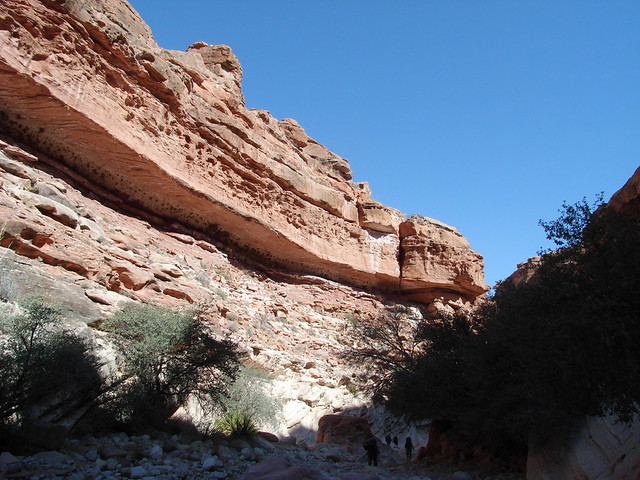
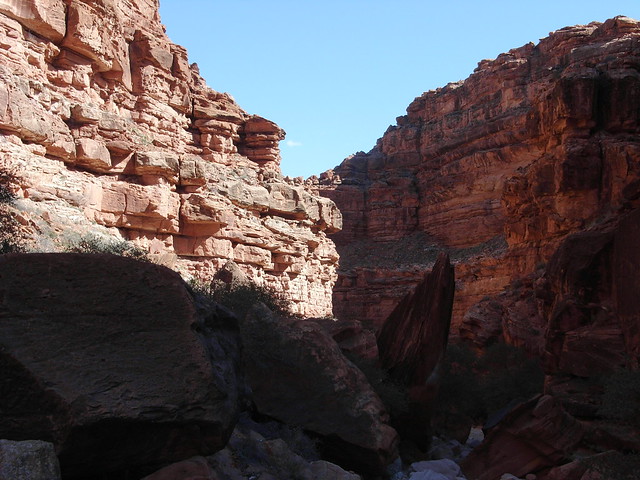
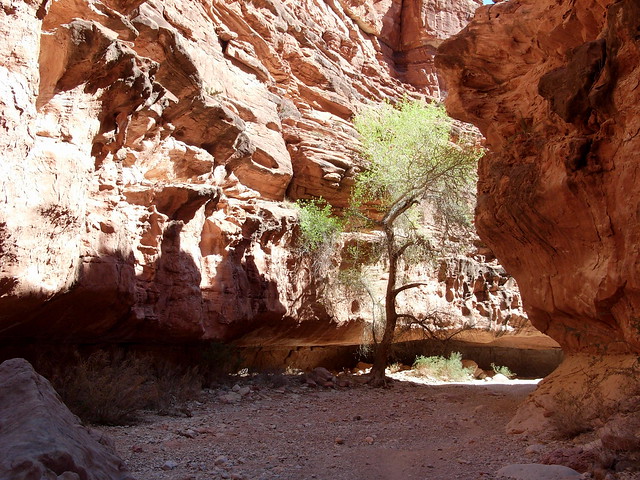
The ground on the hike down is fairly level, with just a few small patches of slickrock and boulders. There are a few worn paths in the wash, which is mostly loose rock and sand. If you stay single file and try to follow those paths, your ankles will thank you. Every once in awhile, there are also a few use trails that leave the wash and travel on packed-down dirt on the banks, instead. Your ankles will like these even better. Don’t worry about getting lost by taking these paths — everything goes to the same place, and the distance added by taking them is negligible.
Toward the end of Hualapai Canyon, the walls narrow and tower over you. Here, the rocks are arranged in very neat block-like patterns, almost looking like a sort of natural masonry. In this section of the hike, you’ll be joined by a small, sluggish, spring-fed stream. It’s the first water you’ll see, but it’s by the far the least impressive.
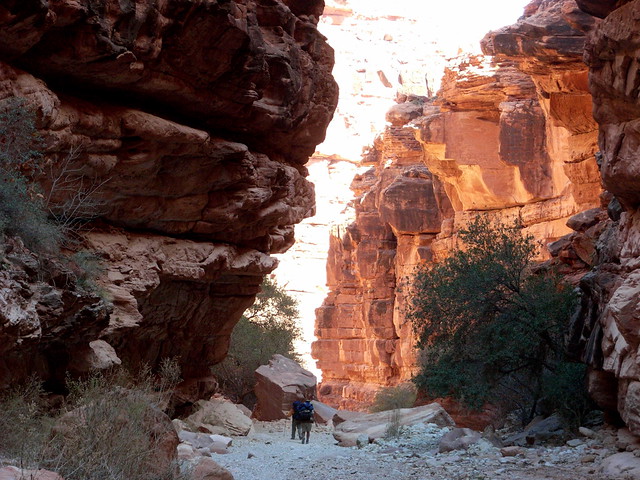
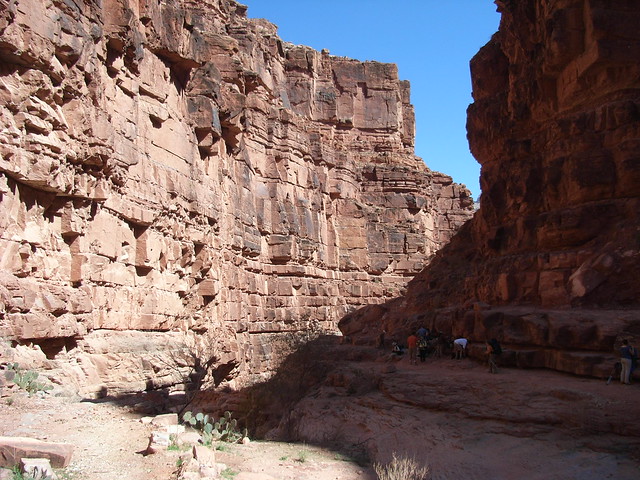
Here, the trail opens up into the wide (at least by canyon standards) floodplain of the Havasu River. You still won’t be able to see or hear the river, but you will notice the abundance of trees and other water-hungry plantlife.
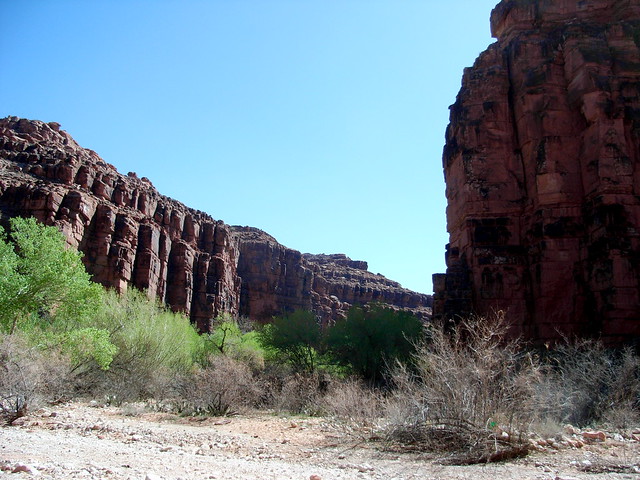
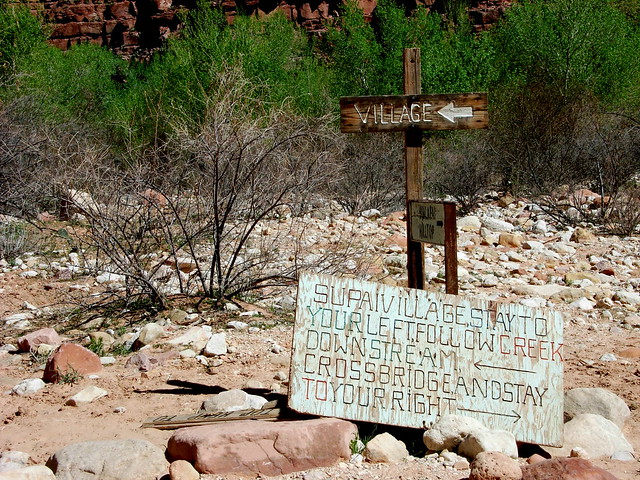
On the path toward the village, the Havasu River will be on your right, just beyond a small bank. If you step up and peek into the water, you’ll get your first glance at the almost otherwordly-blue of the water, tinted by a naturally occurring high mineral content.
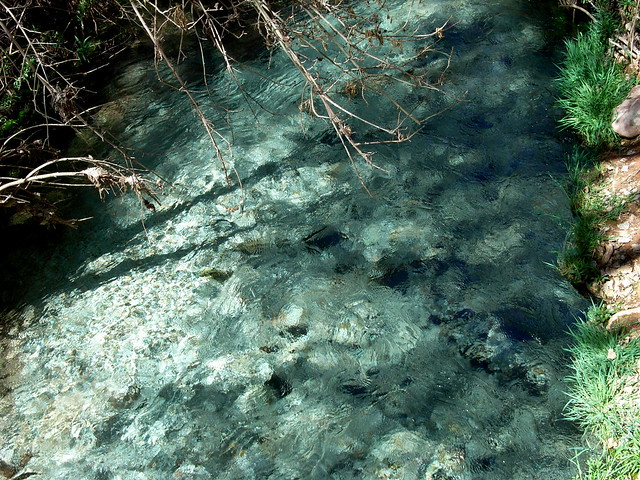
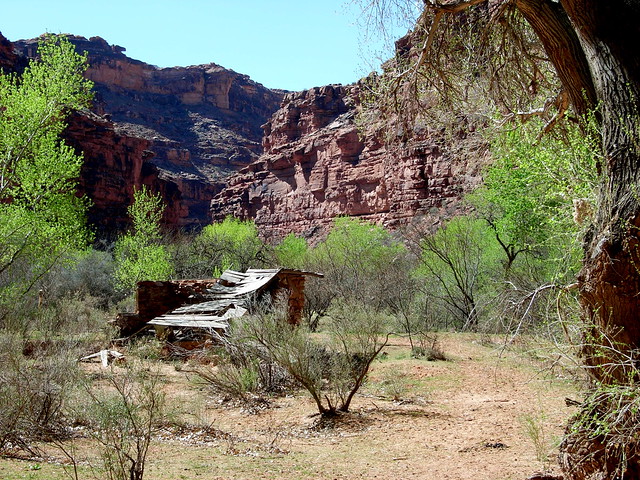
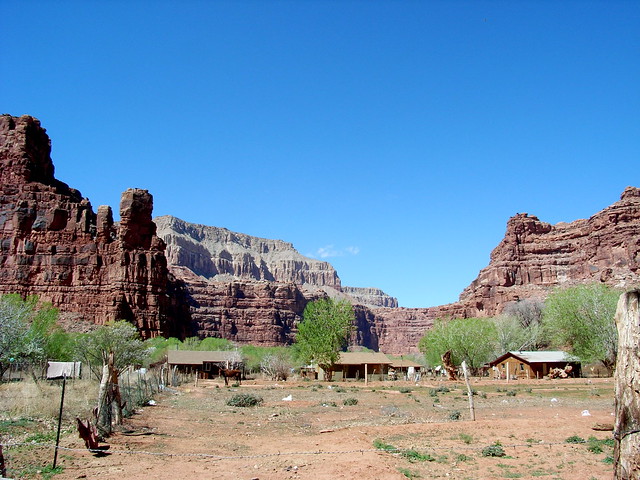
Continuing down the village’s road, you’ll pass a few more houses, a very modern-looking school, and a church before leaving the village proper. The trail follows the banks of the Havasu River, which you’ll notice getting wider and faster. Navajo Falls is the first waterfall you’ll see — a series of cascades, hidden by trees. It’s a bit off-the-path, and as the group was headed toward the campground, we kind of just passed it by.
But here’s a great shot from Flickr.

Original by uacheesehead
The group kept hiking down on the path, which was now a moderately deep, red sand. Not fun to walk on at all. But — almost two miles from the general store — you’ll start to hear a thundering roar just down the trail. The floors fall away on the horizon, the canyon walls open up, and you cast your eyes on Havasu Falls.
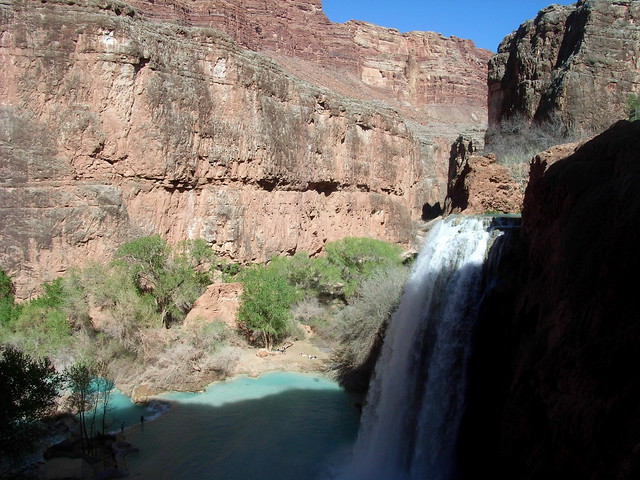
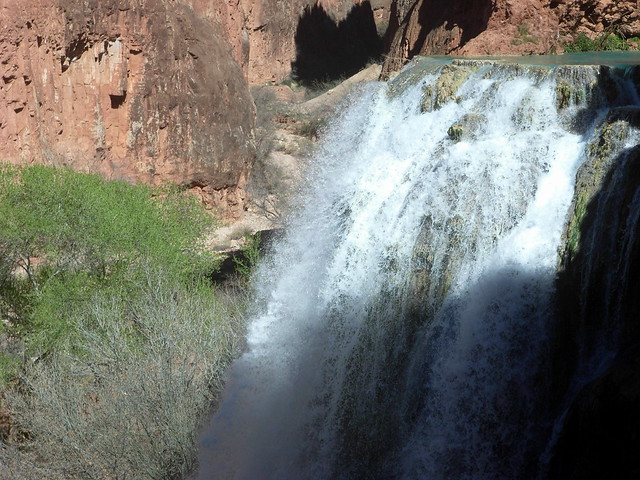
I kept looking back, even as our group continued farther down the river to set up our camp site, cook our dinners, and chip-in to make a giant, trash-bag salad.
***
The first night was cool and calm, and I slept deeply and undisturbed. I actually probably went to bed around 9 o’clock and didn’t wake up until 10 the next day. I never, ever sleep like that in a bed. Only near running water.
I woke up, downed a few gulps of trail mix, and joined a few new buddies for a photo-trek back up to Havasu Falls. I stopped briefly to take a snapshot of the river near our camp site, because I couldn’t believe how blue it was.
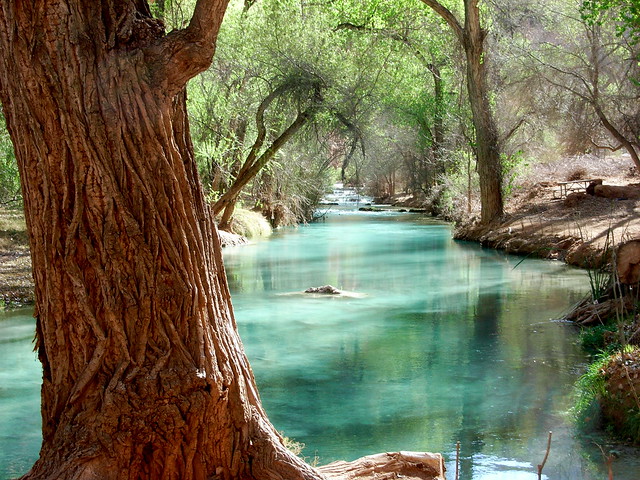
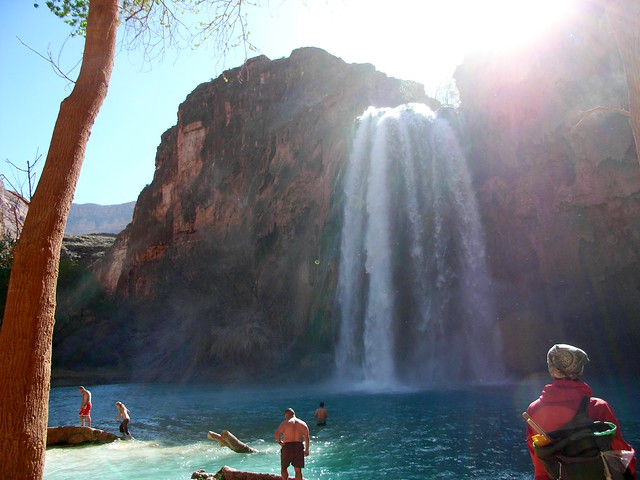
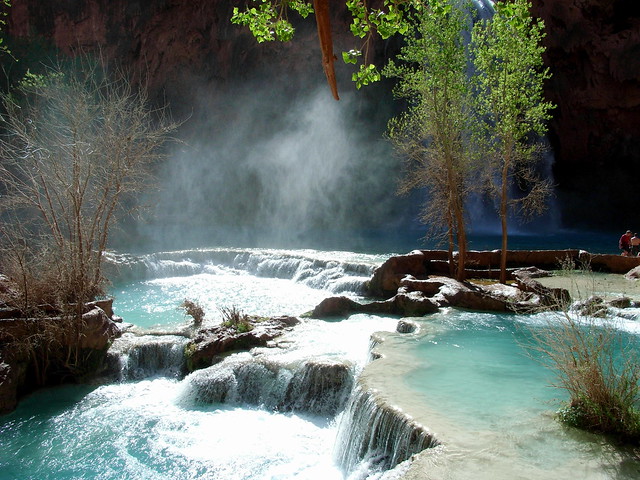
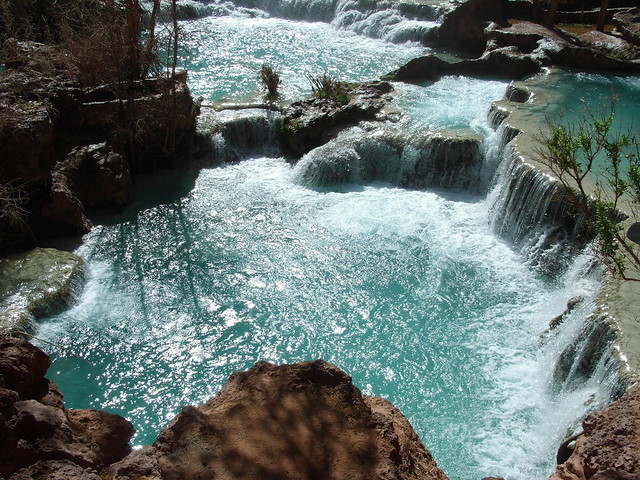
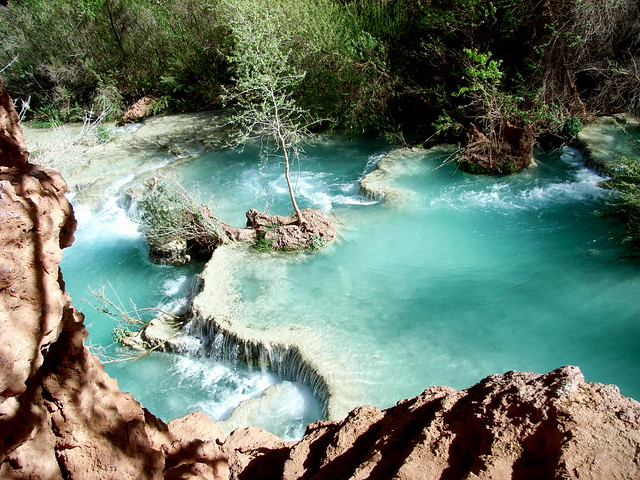
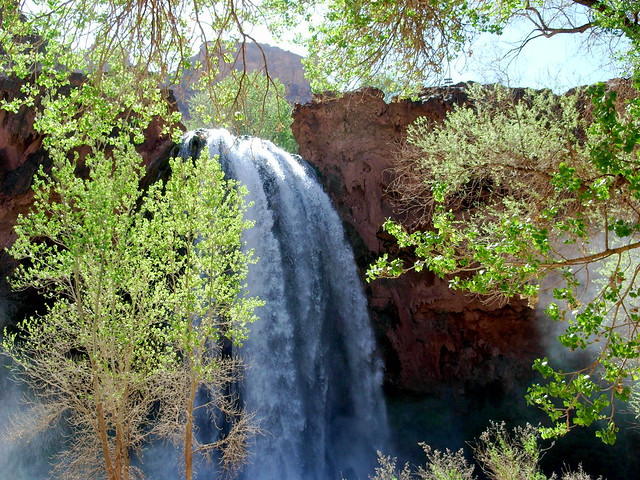
Just past the campground in the opposite direction of Havasu Falls is the impressive sight of 200 foot-tall Mooney Falls — named for a prospector who died while trying to ascend the cliff that drops down Havasu Canyon.
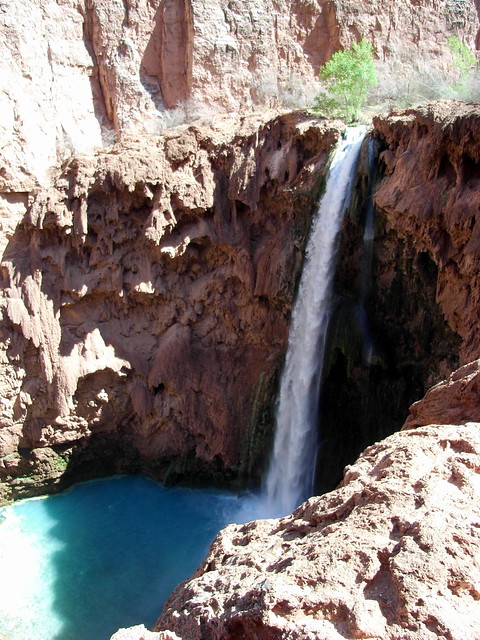
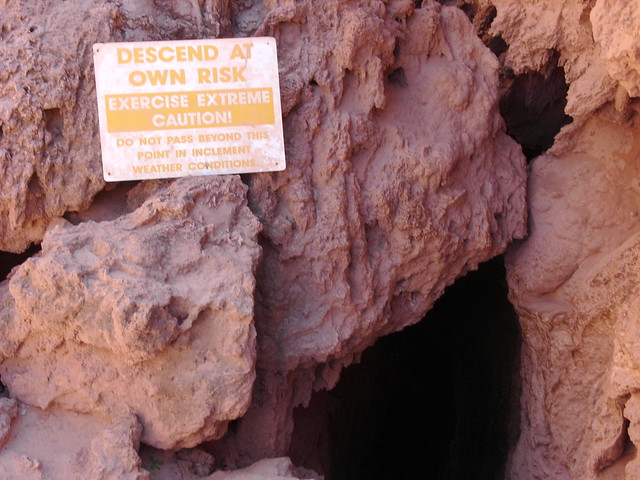

It’s a tight fit, but definitely doable for most average sized folks. And they’re not that long, either, so even the mildly claustrophobic should be able to get through. The next section, however, is pretty damn scary.
The caves open up on the side of the canyon wall, with the waterfall in full view. From here on down, you’ll be climbing down a series of chains, metal stakes, and ladders, all while dodging two-way traffic, worrying about the waterfall’s mist making everything slippery, and generally freaking out. ‘Cause really, it’s one wrong move and you’re joining Mr. Mooney.
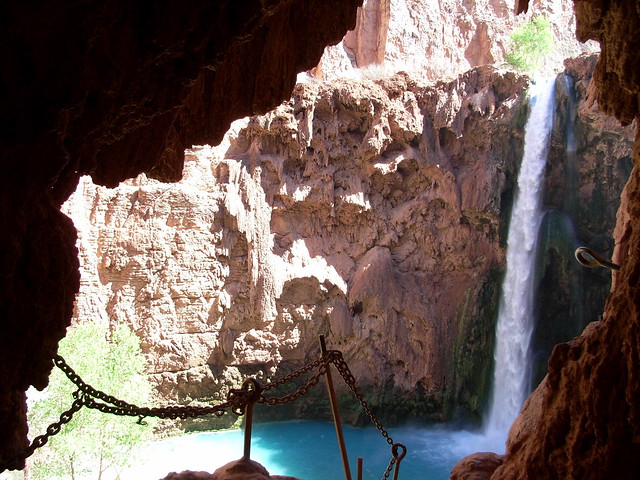
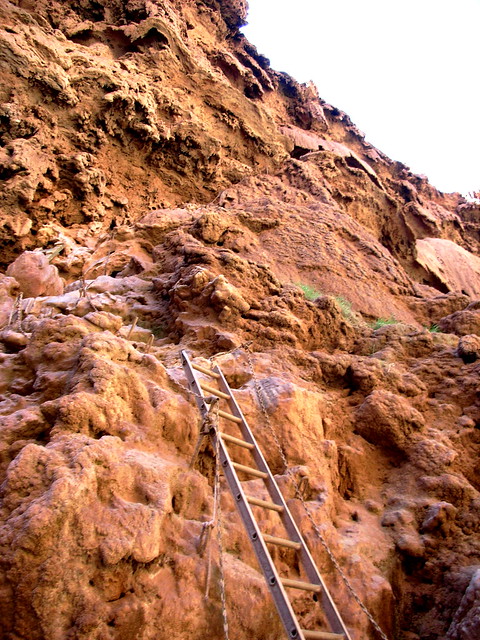
I made it down, but I’ll be honest and say that my legs were shaking pretty badly by the time I got them back on solid ground. It’s all mental — the same thing happens whenever I try to descend down the Mountaineer’s Route of Strawberry Peak. But at least it’s easier going up for me, and the way back out wouldn’t be as harrowing.
We took a few moments to enjoy the spray of the water, then hiked further down the canyon … then stopped to look back at the waterfalls one more time.
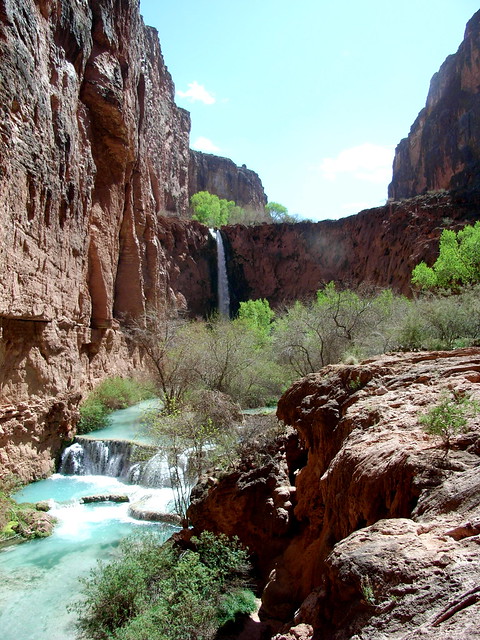
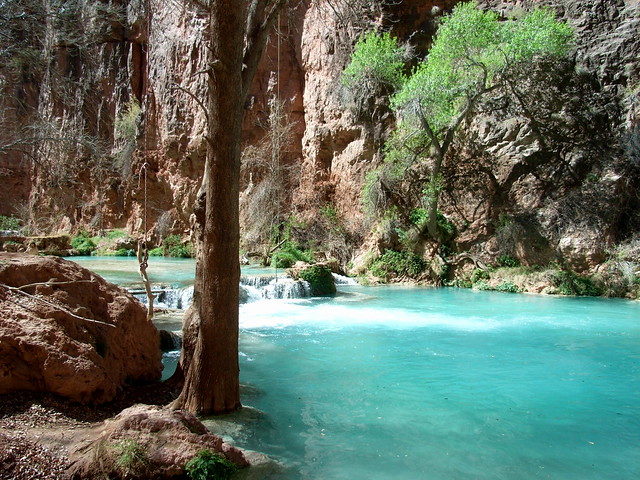
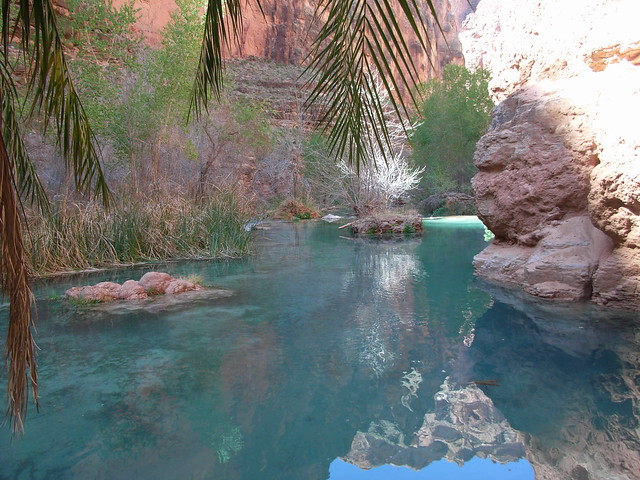
At least on this part, if you fall, you’re just going back into a little pool of water a few feet below you.
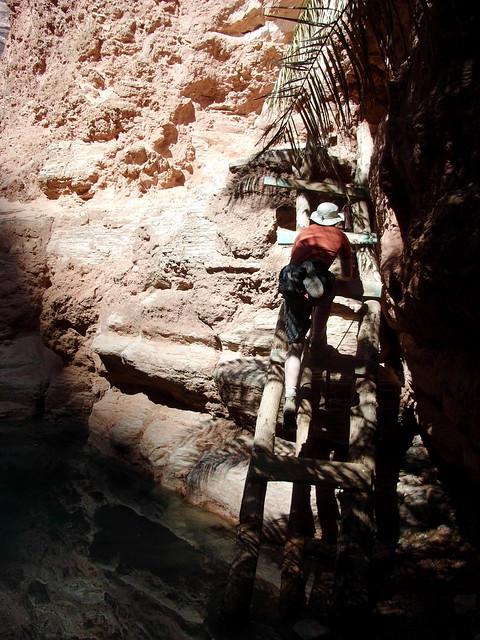
Admittedly, it’s a bit underwhelming after the towering drops of Havasu and Mooney, but the blue water against the canyon rocks still makes for an impressive sight.
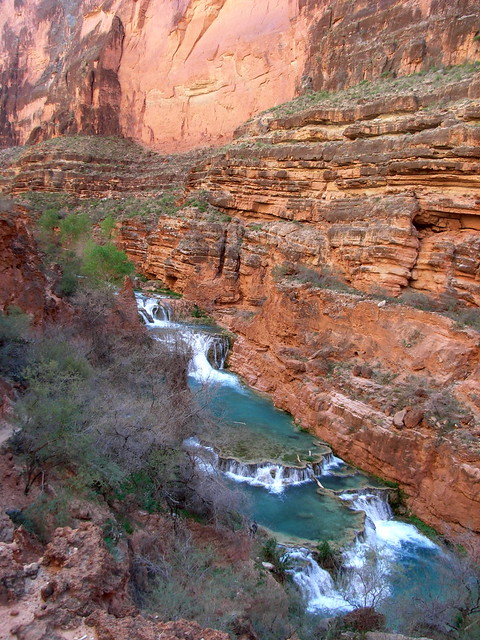
After years of *just missing* them while my hiking buddies saw them all over the place, I finally got to see two males wandering around the trail, grazing, and occasionally half-heartedly butting heads. Apparently, they weren’t too worried about people, either, as just about everyone else in the group who wandered past Mooney Falls got to see ’em … and probably take better pictures than I did, but hey …
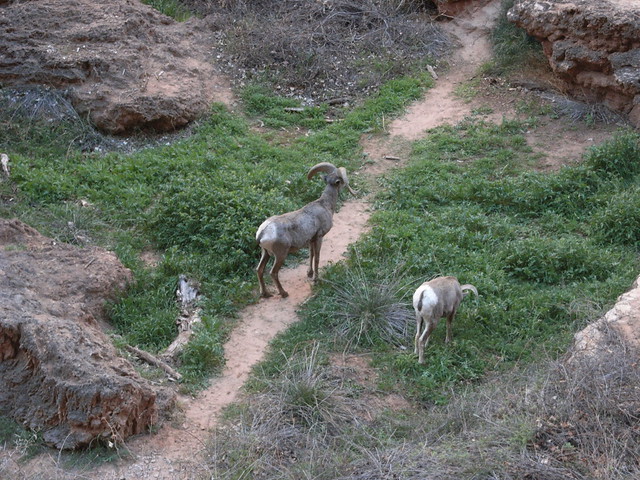

***
After an early bedtime on Saturday, I woke up at 4:30AM, packed up my tent in the dark, and joined the rest of the group on the hike out to the busses.
We left early to try to avoid mid-day heat, but thankfully a thick layer of clouds rolled in late morning so we didn’t have to worry too much about heat. Also thankfully, the reins were removed from hikers’ paces, and we were allowed to go on as fast as we wanted to. I took up a good spot at the tail end of the lead group, and managed to make it back up to the Hill in almost half the time it took us to get down.
Just in time to see a rainstorm off in the distance.
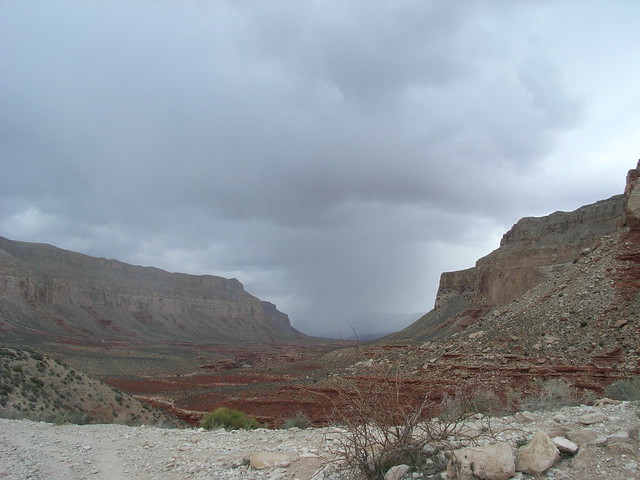
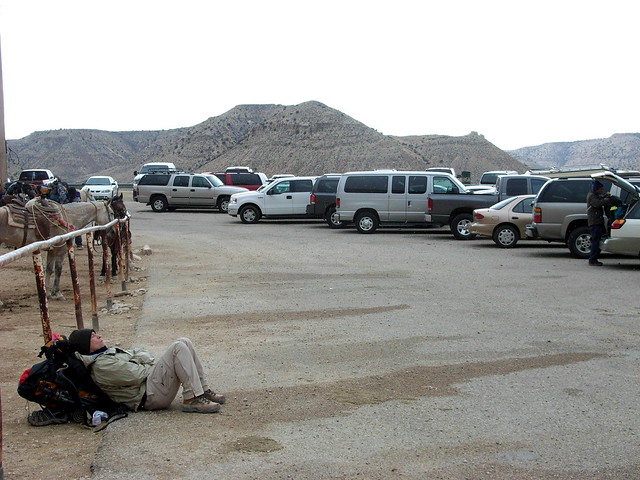
Update: A series of flash floods hit this canyon just a few months after I visited in 2008. The canyon was off-limits to visitors for several months afterward, but has since re-opened. Several of the waterfalls have drastically changed their appearance – and a brand new waterfall has also appeared just south of the Village. Here’s a view of “New Navajo Falls” I had when I went back in the summer of 2012 – which is different than the Navajo Falls I saw in 2008, but still unbelievably gorgeous.
Tags: Arizona, Backpacking, Beaver Falls, canyons, Grand Canyon National Park, havasu falls, Havasupai Indian Reservation, Hiking, Mooney Falls, Supai Village, waterfalls







